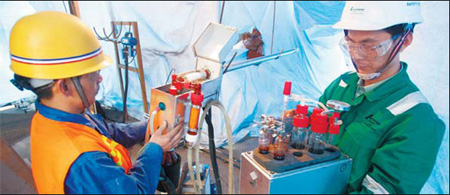News
Strict adherence to cement kiln eco-guidelines urged
By Dan Na (China Daily)
Updated: 2009-12-24 07:49
 |
Large Medium Small |
|
The co-processing treatment of hazardous wastes needs to adhere to very strick standards of environment protection and risk control to counter safety and health concerns. Yang Shizhong |
When the first phase of Sino-Norwegian cooperation on Environmentally Sound Management of Hazardous and Industrial Wastes in Cement Kilns in China came to an end, a guideline, based on lessons learned, best practices, technical research, experiments and demonstrations, was developed. This aims to constitute a uniform standard for all the cement plants co-processing of industrial and hazardous wastes in order to prevent environmental pollution and accidents during operation.
Several cement plants in China contributed to the guidelines during the initial stages of the project. Those plants have now gained technical know-how and experience of waste management as well as developing a new revenue stream. They can also reduce the cost of their operations as they use less fuel and less raw materials.
Frederic Vallat is the Industrial Ecology Regional Vice President and a senior executive of Lafarge Shui On (Beijing) Technical Services Co Ltd. Commenting on the success of the project, he said: "It's a win-win situation. The co-processing of waste in cement kilns could represent environmental and economic salvation for China."
One of the important tests of the stabilization of the heavy metals in the processed cement took place in Chengdu's Lafarge Shui On Cement Ltd, a joint venture between the France-based Lafarge Group, the world leader in building materials industry, and the Hong Kong-based Shui On Construction and Materials Ltd.
At the request of the project, the test in Lafarge was an investigation into the effects of the heavy metals embedded in the clinker and cement and their ultimate environmental impact. The aim of the study was to establish the long-term implications of the process.
The heavy metals used in the test came from a number of different chemical companies and were fed into the kiln as pure chemicals. The cement samples were then selected for further investigation and chemical analysis in a bid to establish their impact on the finished cement product.
The test directly addressed prior concerns that stabilized heavy metals would be harmful to health or to the environment. It proved that it is incumbent on all those involved in co-processing to exhibit the maximum care and ensure there are no subsequent hazards to the cement quality or in terms of any emissions generated.








